







result of a decade-long collaboration between WSU and Belgian biotech firm APIX Biosciences. It combines a proprietary mix of ingredients with six key sterols – essential plant-based nutrients bees usually get from pollen. One of these, isofucosterol, plays a particularly vital role in bee development.
The results were striking: colonies fed the new supplement showed consistent strength, completing nine brood cycles and replacing their entire worker populations twice within just 15 weeks. In contrast, the other groups experienced decreased larval
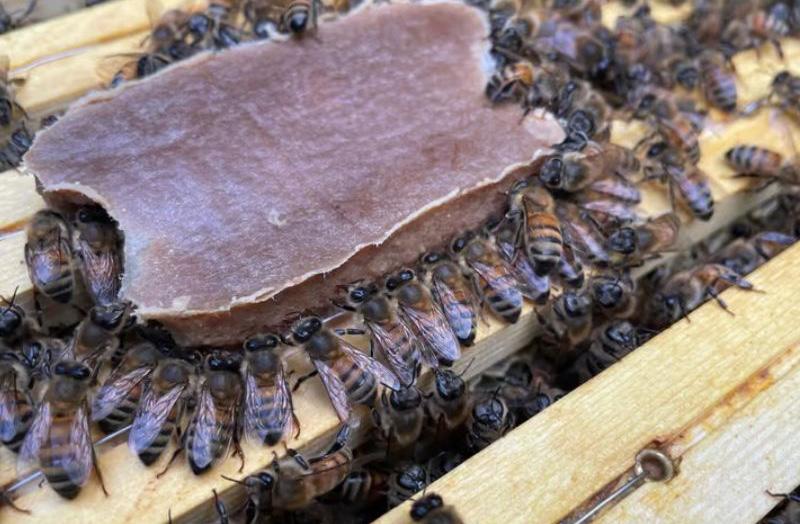
▶ Credit: APIX Biosciences
Crucially, the supplement mimics the natural sterol ratios found in wild habitats where bees typically forage. It’s made into soft patties that can be placed directly into hives, allowing bees to consume them easily.
To test its effectiveness, researchers conducted a field study in which smaller hives were fed exclusively on the new supplement over an entire honey season. These hives were enclosed in tents to prevent access to outside pollen. In comparison, other hives received either standard commercial feed or had access to low-nutrition pollen sources like sunflower and blueberry.
development, signs of paralysis in adult bees, and in some cases, total hive collapse.
“Before this, honeybees were the only form of livestock we couldn’t sustain with artificial feed,” said Dr. Patrick Pilkington, CEO of APIX.
“Our findings demonstrate that colonies under nutritional stress can experience a significant health boost when fed our pollen-replacement formula, even outperforming current industry standards. This has the potential to transform hive management practices.”
The team expects the supplement to be available for commercial use by mid-next year. The
full study was recently published in Proceedings of the Royal Society B. Meanwhile, the US Agricultural Research Service is also exploring a complementary “bee chow” enriched with microalgae.
Just when we think we’ve experienced the full spectrum of visible color, scientists have reportedly discovered a way to reveal a brandnew hue to the human eye — a color that’s never before been perceived. They’ve named it Olo.
it likely doesn’t convey the awe of encountering a completely unfamiliar color — one that lies outside the usual boundaries of human color perception. Researchers even shared an approximation of the shade with The Guardian, though it’s still just a visual placeholder for something profoundly novel.
To witness this new color, participants had a carefully calibrated laser beam directed into their eye. But understanding this breakthrough requires a brief refresher on how human vision works.
Our eyes use two primary types of photore-

▶ Credit: DALL-E
Before diving into the details, it’s worth noting how participants in the study described this color: an intensely vivid, almost surreal blend of blue and green — a tone so striking that it left viewers stunned.
While that description offers some sense of it,
ceptor cells: rods and cones. Rods assist with night vision, while cones handle color. There are three cone types, each sensitive to specific light wavelengths — long (L), medium (M), and short (S), corresponding roughly to red, green, and blue light.
Typically, we see colors based on how these
treatment showed partial restoration of visual function. Though it’s difficult to evaluate mouse vision in detail, the results demonstrated that the gold particles could effectively compensate for damaged photoreceptors.
“We found that the nanoparticles remained in the retina for months without causing significant toxicity,” Nie explains. “And they successfully activated the visual system. That’s a promising sign for clinical development.”
Unlike existing AMD treatments or procedures for conditions like retinitis pigmentosa, this method avoids major surgery and bulky implants. It’s minimally invasive and could offer broader visual field restoration.
Researchers must conduct further testing before they can apply this method to humans.Still, the findings represent a strong foundational step.
The field of ophthalmology is increasingly exploring innovative technologies to address vision loss — including techniques that reprogram other retinal cells to replace damaged photoreceptors.
“The development of this technology is a major leap forward and may eventually lead to wearable, light-based devices for restoring sight,” the
researchers conclude in their published report.
ble with laptops built on an architecture that combines NPU, CPU, and GPU – such as the Microsoft Surface Laptop for Business, Lenovo Yoga Slim, HP Elitebook, and Acer’s Swift Go 14. This is not an exhaustive

▶ Credit: Sightful In 2023, tech startup Sightful introduced an innovative system that combined hardware and software to project a massive virtual screen in front of the user’s eyes. Now, the company has decided to phase out the hardware component and adapt its platform to work with AI-powered laptops.
According to Sightful, the rapid progress in computers with integrated neural processors has made dedicated hardware unnecessary. This shift has allowed the company to focus entirely on software development.
As a result, the newly released Spacetop for Windows is compati-
list, and the number of compatible devices is expected to grow rapidly. Canalys estimates that by 2027, 60% of PCs will be AI-capable.
As with the original version, users will still need to wear augmented reality glasses to view the 100-inch virtual display. The new $899 bundle includes the lightweight (83 g) XReal Air Ultra 2 glasses and a one-year Spacetop subscription (after which the service will cost $200 per year).
Optical lens inserts are also available: single-vision lenses for $50 and progressive lenses for $150.
To use the system, users must either own or purchase a modern laptop that supports spatial computing. In return,
they gain access to an expansive virtual workspace capable of handling multiple windows at once. The platform delivers a natural operating system experience and uses intuitive keyboard shortcuts that allow users to move windows or push them deeper into the virtual space.
The software is compatible with everyday productivity apps for both personal and business use on Windows. Sightful also highlights that the system delivers bright and sharp visuals both indoors and outdoors, while offering private, immersive sessions shielded from prying eyes. A Travel Mode allows users to save their virtual workspace for use on the go.
We created AI PCs to enable innovations like Spacetop – and Spacetop fully unlocks the potential of this architecture,” said Tamir Berliner, co-founder and CEO of Sightful. “For four years, as we developed Spacetop, users and businesses constantly asked us, ‘When will it come to Windows?’ Today, we’re finally delivering on that request.The rise of AI laptops not only accelerated our mission to scale through software, but also unlocked incredible new possibilities for what an AR workspace can achieve when combined with the power of AI.”
Spacetop for Windows
is now available, with the bundle including AR glasses and a 12-month subscription for $899. For the first time, the system is also launching outside the United States, beginning in Germany in partnership with Deutsche Telekom. Check out the video below for more.
a pattern that could resemble a tilted, pouty “smiley face,” depending on where you’re viewing from.
Admittedly, the resemblance is a bit of a stretch. Still, it’s a perfect excuse to head outside and witness a conjunction, a fascinating event when two or more celestial bodies appear to converge in the sky.
During this alignment, the Moon will be a slim crescent — its next new phase occurs on April 27.

▶ Credit: Jackyenjoyphotography_Moment_Getty Images
Every so often, the night sky offers us a delightful surprise — and this month, a celestial arrangement might just bring a smile to your face.
In the early morning hours of Thursday, April 24, and Friday, April 25, a rare alignment will occur as the waning crescent Moon meets up with the planets Venus and Saturn. This cosmic trio will appear close together in the sky, forming
If you’re lucky enough to be in an area with minimal light pollution, you might also catch a ghostly glimpse of the Moon’s full shape lit by earthshine, which is sunlight reflected from Earth faintly illuminating the Moon’s dark side.
Venus and Saturn will both be visible without any equipment. Venus, the brightest object in the night sky after the Moon, will shine boldly, while Saturn will appear dimmer but still easy to spot.
For those wanting a closer look, binoculars or a telescope can greatly enhance the view. A telescope aimed at Saturn may even reveal its iconic rings — a breathtaking sight everyone should experience.
Mercury will also make an appearance, hugging the horizon. While it can be seen with the naked eye, spotting it might be trickier because of its closeness to the Sun.
And if you’re turning the event into a stargazing night, keep an eye out for Mars and Jupiter earlier in the evening, as they track across the sky along the Sun’s path.
Don’t Miss Venus at Its
Venus will reach peak brightness on April 27, and won’t shine this brilliantly again until November 2026 — so it’s a great time to enjoy the view.
To find the best viewing times and visibility for your location, check out TimeandDate or Stellarium, two excellent resources for skywatchers.
Despite being our most complex organ, the brain has traditionally been treated using fairly straightforward methods.
In most cases, surgeons would intentionally damage a specific structure or pathway in the brain, hoping that this would “fix the imbalance” responsible for the disorder. The areas chosen for these procedures were often identified through trial and error, chance discoveries, or animal experiments.
In 1987, French neurosurgeon Alim-Louis Benabid discovered that electrical stimulation used to locate lesions had similar effects to the lesion itself. This led to the development of deep brain stimulation, where electrodes are implanted in the brain to send electrical impulses. Used to treat advanced Parkinson’s since the 2000s, the stimulation settings were fixed and only adjustable during clinic visits. Initially seen as a reversible alternative to lesioning, the field is now evolving, challenging this view.
Earlier this year, US and European health authorities approved adaptive deep brain stimulation. This method uses a computer to analyze brain activity and determine whether to increase or decrease the stimulation amplitude to provide optimal relief for the patient’s symptoms.
Parkinson’s is a complex condition with fluctuating symptoms influenced by medications.
Continuous stimulation works for some, but for others, it can be too strong or weak at different times. Ideally, treatment should activate only when most beneficial.
threshold, the stimulator is activated, reducing the waves until they disappear, at which point the stimulation is paused.
The original setup was large and hospi-

▶ Credit: DepositPhotos
The discovery enabling adaptive stimulation was made by University College London researchers over twenty years ago, around the same time Parkinson’s patients first received electrode implants at the UK National Hospital for Neurology and Neurosurgery.
Brain Wave-Based Control: A Breakthrough in Deep Brain Stimulation for Parkinson’s
After surgery, scientists noticed a specific brain wave pattern when patients stopped their medication, causing symptoms to worsen. These waves disappeared when medication resumed. After ten years of research, the team used these waves to control stimulation, similar to how a thermostat manages an air conditioner. When the waves exceed a certain
tal-bound, but it took another decade to shrink the device to matchbox size, allowing it to be implanted in a patient’s chest.
Even with fixed settings, doctors must adjust many parameters for effective treatment with minimal side effects.
Adaptive stimulation adds complexity, requiring more time and attention from the clinical team.
vs. Adaptive Stimulation in Parkinson’s
In Parkinson’s, stimulation effects are immediate, making constant settings easier to assess. However, adaptive settings need several days of testing to evaluate their response to the patient’s routine and medication cycles.
Adaptive stimulators also sense harmful brain
waves over time, allowing the clinical team to monitor control effectiveness.
These advancements are new in Parkinson’s treatment, though similar devices have been used for years by cardiologists and epilepsy specialists.
Studying brain waves from Parkinson’s patients with smart stimulators offers new insights into other diseases, including depression and cognitive decline. AI tools can help identify subtle features in brain signals linked to these symptoms.
Research is also mapping brain circuits related to neurological and psychiatric conditions, with promising results for treating depression, OCD, and severe headaches. The field is moving towards precise, activity-based brain stimulation, with rapid progress expected due to established technology.
Anker has unveiled its new outdoor projector, the Nebula X1, which promises cinema-quality brightness, easy setup, and immersive sound, all for $3,000.
The X1 features a triple-laser system, with separate lasers for red, green, and blue, each
designed to last 30,000 hours. It’s paired with a 14-element glass lens capable of delivering an impressive 3,500 ANSI lumens, making it ideal for daytime outdoor viewing.
The X1 delivers 4K UHD output on screens as large as 200 inches from a distance of 13 to 22 feet (4 to 6.7 meters) with a 0.9:1 to 1.5:1 throw ratio. It features motorized optical zoom, allowing you to adjust the picture size without moving the projector. The lens is mounted on a micro gimbal with sensors, enabling it to tilt vertically by 25 degrees for precise throw angle adjustments.
It also features AI technology that automatically adjusts the image for optimal position and size based on the projection surface, adapts visuals for wall color, and handles keystone correction independently. You can save settings like size and viewing preferences for different rooms, and easily recall them the next time you set up the projector in those spaces.
sistant Glass Lens
The X1 is compatible with Dolby Vision content, offers 110% coverage of the Rec.2020 color gamut, and provides
exceptional detail in dark scenes thanks to its 5,000:1 native contrast ratio. Additionally, Anker notes that the glass lens is heat-resistant and won’t blur the image after prolonged use, unlike resin lenses.
latency within a 100 ft (30 m) range.
The projector promises quick one-tap setup, runs Google TV and the boatload of streaming apps on the platform, and supports voice com-

▶ Credit: Nebula
The company has incorporated a liquid cooling system into this 13.7-pound (6.7-kg) projector for improved heat dissipation. Anker claims that this groundbreaking feature makes the projector lighter and quieter compared to one with a traditional fan cooling system.
The audio experience is also quite impressive. The projector features a built-in speaker system with dual tweeters, a full-range speaker, and a passive radiator, producing 40 W of sound. Additionally, you can wirelessly pair it with lossless speakers for 4.1.2 surround sound. Each satellite speaker has four drivers and provides up to 8 hours of playtime on a single charge. Since they connect via Wi-Fi, you’ll get minimal 25 ms
mands as well as a good ol’ physical remote and a mobile app to control it. You’ll also find physical buttons on the device itself, along with two HDMI 2.1 ports for 4K at 60 Hz, USB Type-A and Type-C ports, and a 3.5mm audio jack.
Convenient Features and Considerations: Portability, 3D Support, and Karaoke Options
There are a few other convenient features to enjoy, such as a pop-up handle for easy portability. However, this model doesn’t have an internal battery, so you’ll need to consider connecting it to a wall outlet. It also supports 3D, provided you have DLP Link 3D glasses and compatible content, as well as optional wireless microphones for karaoke. The latter is a feature you don’t often
find on a projector.
The X1 will be available for purchase starting May 21, priced at $3,000 for the projector alone. A bundle that includes two satellite speakers, two microphones, and a carrying case is expected to be priced at $4,000. However, by signing up with your email on Nebula’s product page, you can get up to $700 off the bundle.
At that price, it’s considerably more expensive than the $2,000 Nebula Cosmos Laser 4K, which has received positive reviews. JMGO’s gimbal-mounted N1S Ultimate offers some similar specs at $2,800,, and there’s also a more affordable a 4K budget option in this lineup. On the other hand, HiSense offers its C2 Ultra priced just under $2,500. So, while there are several alternatives in this category, the Nebula is worth considering if you’re particularly interested in a very bright display and wireless audio.
Whisper Aero is developing a leaf blower that moves 40% more air, uses 40% less power, and produces half the noise of conventional models, showcasing their focus on efficiency and reducing environmental impact.
Whisper’s air-moving technology, initially not meant for garden tools, led to a licensing deal with Stanley Black & Decker, which will use it in consumer products. This partnership provides steady revenue as Whisper shifts focus to quieter electric aircraft.
Whisper CEO Mark Moore: From NASA Engineer to eVTOL Innovator
Whisper CEO Mark Moore, a former NASA engineer, gained attention in 2010 with his Puffin eVTOL. As the eVTOL air taxi boom surged, he pivoted to selling ‘shovels’ instead of chasing costly FAA certification. Seeing the need for key infrastructure, he focused on providing tools for success. For air taxis to revolutionize commuting, they must be quieter, more efficient, and more sustainable than helicopters and planes.
Whisper’s UltraQuiet WhisperDrive Redefining Noise and Efficiency in eVTOL Design
“Whisper’s UltraQuiet WhisperDrive powers through with its high-efficiency electric ducted fan, featuring a compact design, reinforced blades, and a streamlined shrouding ring that actively reduces drag and noise.” Housed in a lightweight, soundproof duct, it ensures optimal airflow and minimal noise, making it ideal for quiet applications. Its design moves more air with slower spinning, keeping the blade frequency above 16,000 Hz—inaudible to humans and dogs. The fan’s RPM remains Page. 9
low enough to prevent damage from centrifugal force.
The company has secured a US$500,000 grant to integrate the UltraQuiet WhisperDrive into an aircraft, with a team from Tennessee Technological University retrofitting it onto a glider.
Whisper’s eQ250 Powering the Aeriane Swift 3, A New Era for Electric Ultralights
The plan is to use two eQ250 units, Whisper’s largest model, on a Belgian-made Aeriane Swift 3. This electric, tailless ultralight with a 42-ft wingspan was originally designed as a hang glider.
The goal is to have a Whisper-quiet version of this aircraft flying by year’s end.
It will be a modest debut for the technology, with no plans yet for it to become a product. Whisper’s main goal is its 100-seat Jetliner, which offers clean, battery-powered flights up to 700 miles at onethird the energy cost of a conventional jet.
Commercial aviation moves slowly, with high costs at every stage. Here’s a version with active counterparts:
“Though a jetliner prototype is years away, this pioneering company is poised to play a key role in the clean aviation revolution, using groundbreaking technology that could reshape air travel.” We’ll closely monitor their progress and anticipate their impact on the industry.”

▶ Credit: Whisper Aero
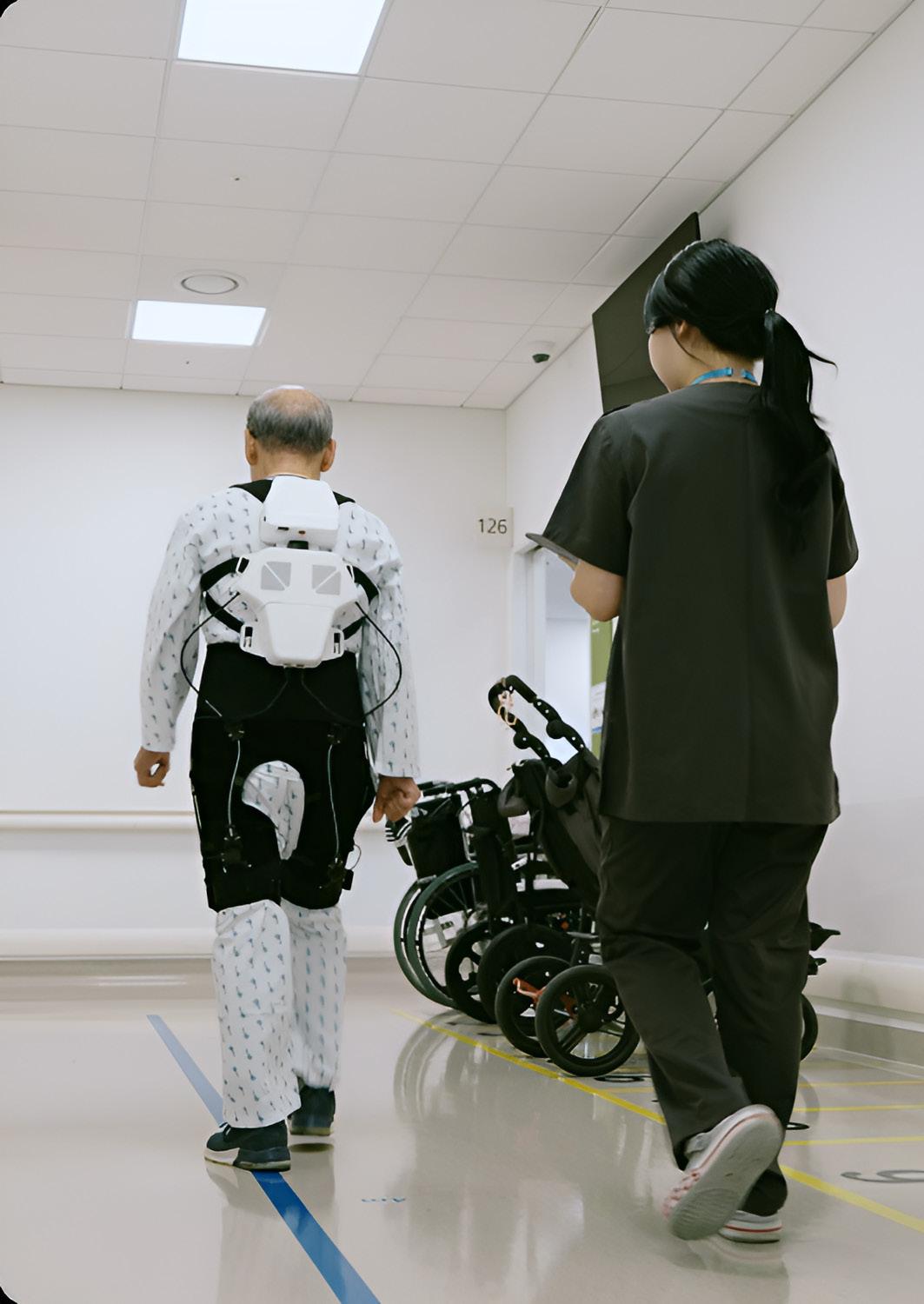
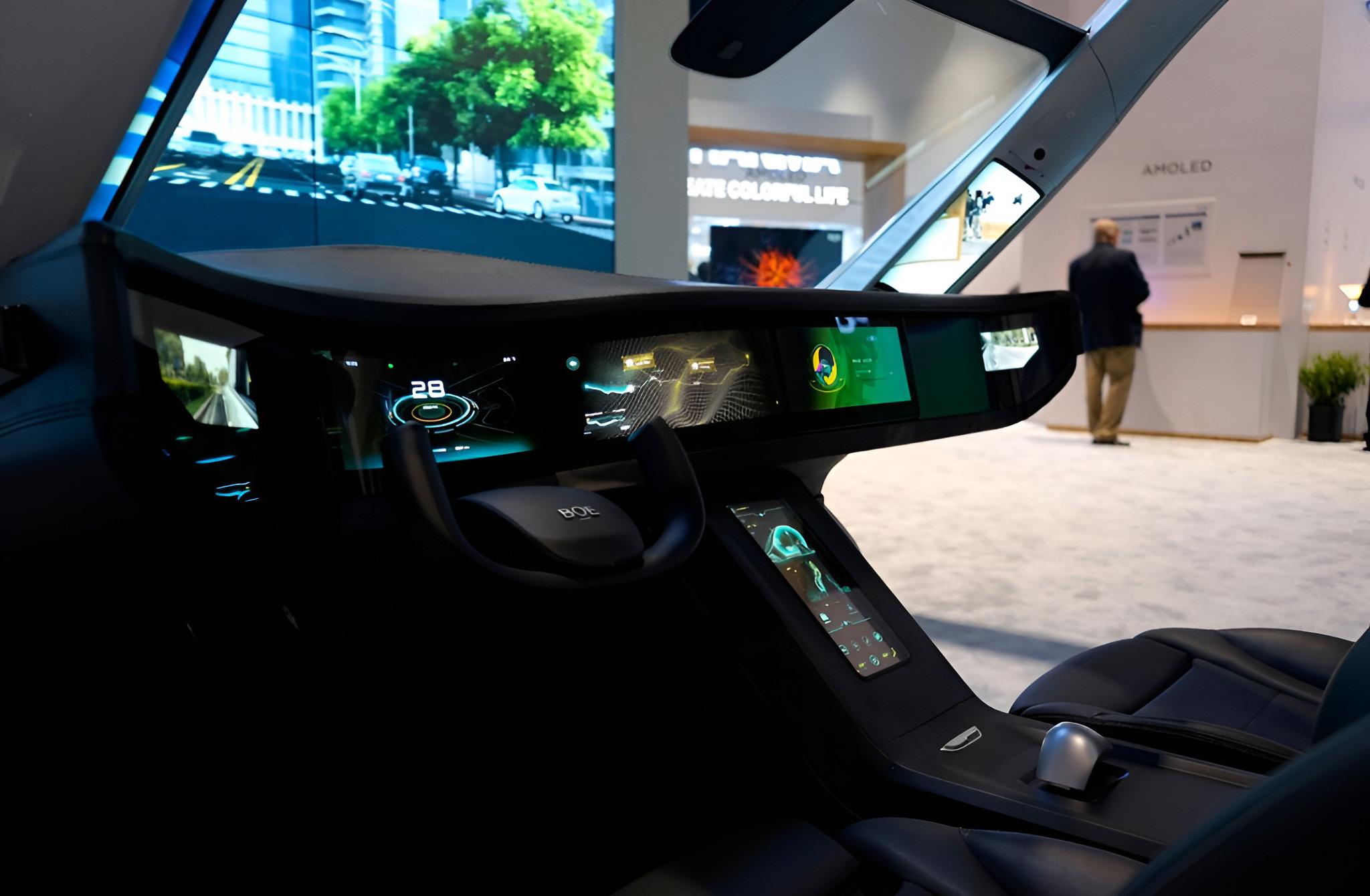

Recent research led by Adrian R. Tasistro-Hart confirms that the Marinoan glaciation began 639 million years ago and lasted about four million years. Evidence from Namibia’s rock formations reveals prolonged grounded ice, challenging previous assumptions about its extent and climate variability.
This freeze likely stemmed from volcanic activity increasing Earth’s albedo, with CO₂ buildup eventually causing a global thaw. Life may have survived in subglacial refuges fueled by geothermal energy, offering clues for life on icy exoplanets and highlighting that each global freeze has a distinct path to recovery.

Between 15 and 6 million years ago, Earth’s sea levels dropped by up to 105 feet due to a tectonic slowdown. Reduced crust production deepened ocean basins and altered long-term sea levels. This event highlights that solid Earth processes, not just melting ice, shape coastlines. Tectonic activity shifts ocean depth slowly but powerfully, influencing ecosystems and sea chemistry over millions of years.
Our Planet Is Approaching Irreversible Climate Tipping Points
New research shows a 62% chance we’ll trigger at least one major climate tipping point, including Greenland Ice Sheet collapse and Amazon dieback. These irreversible shifts would amplify warming and worsen climate instability. While tipping points worsen the crisis, human-driven emissions remain the dominant cause. Cutting emissions drastically could halve tipping risks and preserve critical climate systems.

Fire seasons in eastern Australia and western North America are increasingly overlapping due to climate change. This shift, driven by rising temperatures and drought, limits the window for cross-border fire service support. The overlap reduces time for personnel sharing, forcing nations like the US and Australia to strengthen their own firefighting capacities. Future cooperation will depend on adapting to these synchronized fire risks.
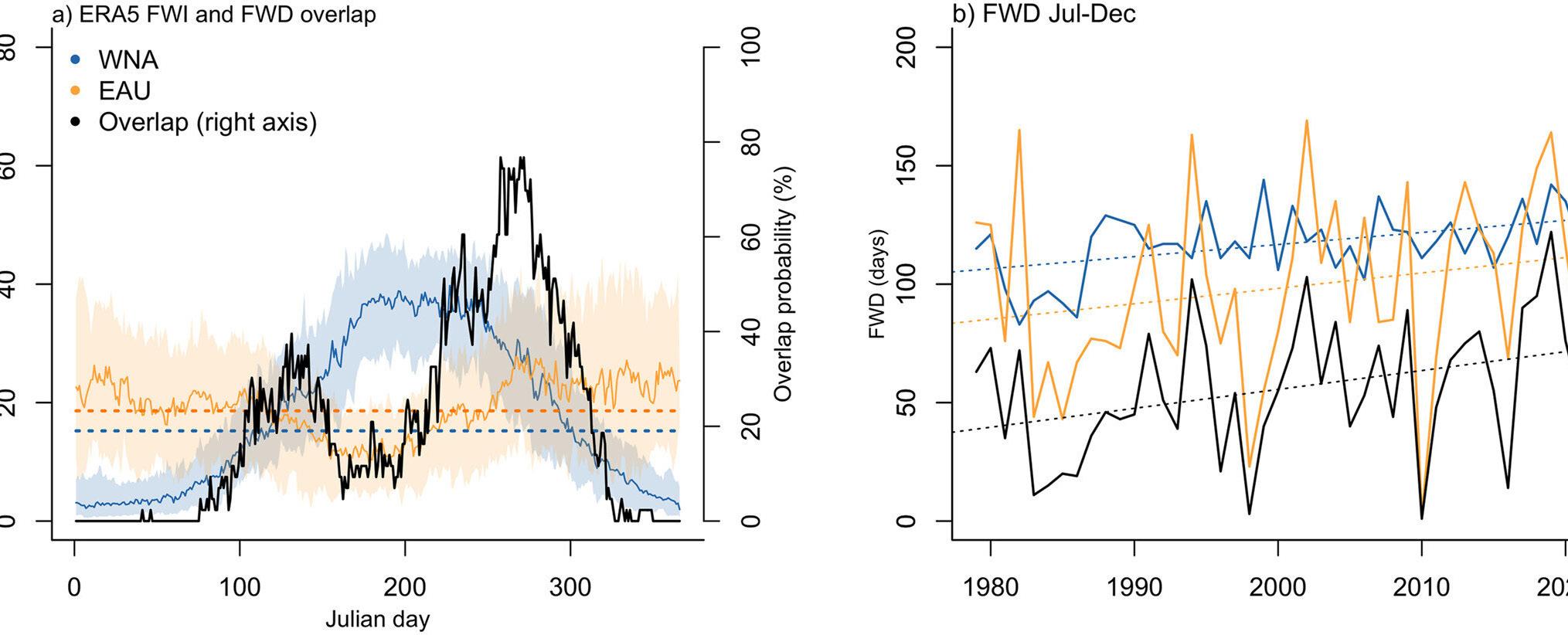





Astell&Kern PD10: A Portable Powerhouse
Astell&Kern’s PD10 debuts AKM’s AK4498EX DAC chips, offering native 32-bit/768-kHz PCM and DSD512 playback with dual amps tuned for detail and dynamics. It integrates with home systems via a USB-C cradle and balanced XLR outputs.
Featuring Wi-Fi, Bluetooth 5.3 with aptX HD and LDAC, 256 GB storage, and 15-hour battery life, the PD10 is both a high-end portable DAP and a versatile streamer, priced at $2,499.

Pre-orders for the Nintendo Switch 2 opened on April 24 but sold out quickly. Currently, the only way to secure one is through Nintendo’s invite system, with first invites sent on May 8. Retailers like Walmart and GameStop no longer have stock, and Amazon has not yet listed the console.
The Switch 2 offers improved features, including a 7.9-inch LCD screen, 4K output when docked, and a 256GB storage capacity. While the price remains $450, the ongoing tariff situation could affect future costs.

Many popular manga have yet to receive anime adaptations, especially in the fantasy and isekai genres. Series like Magus of the Library and The Old Knight in the Frontier Bard Loen stand out for their unique themes and captivating worldbuilding but lack an anime adaptation. Likewise, I Got Caught Up in a Hero Summons, but the Other World Was at Peace! offers a refreshing twist on isekai tropes, making it a great candidate for animation.
Havoc: Netflix’s Relentless Return to Action Glory
Image Credits: Netflix
After four years of anticipation, Havoc delivers a brutal, high-octane thrill ride that confirms Gareth Evans’ mastery of action cinema. Tom Hardy leads as a gritty detective in a chaotic cityscape, carving through conspiracies and carnage with raw power.
Though the plot is messy, the action never misses. With stylized fights, bold pacing, and a comic-book setting, Havoc is Netflix’s most exciting original in years— visceral, relentless, and impossible to ignore.







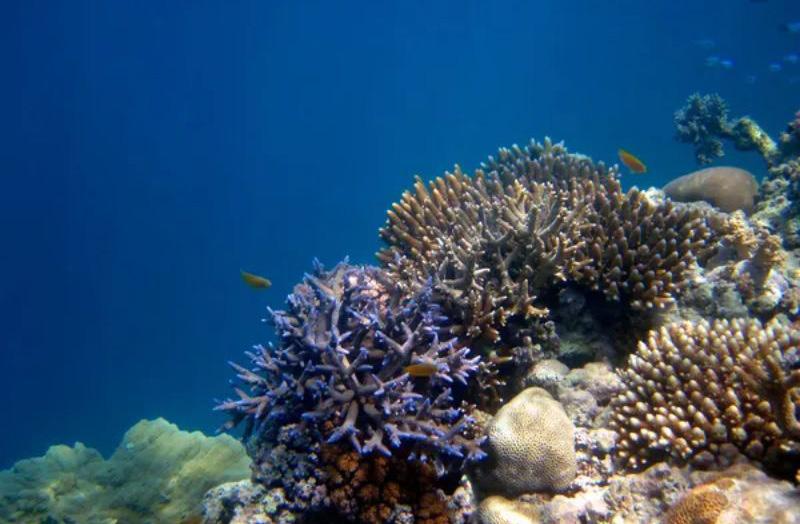
▶ Credit: Depositphotos
Scientists warned Wednesday that an unprecedented coral bleaching event, driven by human activity, is affecting 84% of the world’s reefs and could wipe out large portions of these vital ecosystems.
Since early 2023, the global coral bleaching crisis has escalated into the largest and most severe ever recorded, impacting reefs across the Pacific, Indian, and Atlantic Oceans.
Corals bleach and turn white under heat stress, and over the past two years, ocean temperatures have reached record highs due to human-driven greenhouse gas emissions.
While reefs can sometimes recover, scientists told AFP that prolonged ocean warming is shortening their recovery window.
In some areas, conditions have become so extreme that they could
cause widespread or near-total coral death, according to the US National Oceanic and Atmospheric Administration (NOAA).
“Melanie McField of the Caribbean-based Healthy Reefs for Healthy People initiative said that even typically resilient coral species are now being affected.”
“If heatwaves keep coming one after another, it’s difficult to imagine how reefs can recover,” the veteran reef scientist told AFP from Florida.
Bleaching happens when corals expel the algae that not only give them their vibrant colors but also supply essential nutrients, leaving them vulnerable to disease and death.
According to the International Coral Reef Initiative, live coral cover has declined by 50% since the 1950s due to climate change and environmental degradation.
Scientists warn that with 1.5°C of global warming,
up to 70–90% of coral reefs could vanish—a devastating outcome for ecosystems and the communities that depend on them.
Coral reefs benefit not only marine life but also hundreds of millions of people in coastal communities globally, offering food, storm protection, and economic opportunities through fishing and tourism.
Coral bleaching was first noted in the early 1980s and has become one of the most well-known and visible effects of the ongoing increase in ocean temperatures due to global warming.
The most recent coral bleaching event is the largest and fourth in total, marking the second occurrence within a decade and surpassing the extent of the area impacted during the previous 2014-2017 event.
“NOAA’s latest update on Monday reported that from January 1, 2023, to April 20, 2025, 83.7 percent of the world’s coral reefs have experienced bleaching-level heat stress.”
The oceans absorb 90 percent of the excess heat from human-caused fossil fuel emissions, leading to warmer sea temperatures, which are the primary cause of coral bleaching.
“The connection between fossil fuel emissions and coral death is both direct and undeniable,” stated Alex Sen Gupta, a climate scientist at the University of New South Wales in Australia.
To better reflect the increased threat of widespread coral mortality from this event, NOAA had to add three additional levels to the commonly used bleaching alert scale.
“It’s like adding Category 6 and 7 to the tropical cyclone scale for coral reefs,” Sen Gupta remarked.
Honduras Reef Shows Signs of Bleaching but Retains 46% Live Coral McField stated that in September 2023, a renowned reef off the coast of Honduras was experiencing bleaching but still maintained 46 percent of its coral alive.
“By February 2024, everything had died, and the living coral coverage dropped to just five percent… We’ve never witnessed such mass die-offs before,” McField commented.
According to the EU’s climate monitor, Copernicus, global temperatures have already risen by at least 1.36°C compared to pre-industrial levels.
Scientists are warning that the 1.5°C threshold could be surpassed early in the next decade.
At 2°C of warming, nearly all coral reefs would vanish.
If all governments fully enforce current climate policies, the planet could warm by up to 3.1°C by 2100.
gramming them to process energy differently.”
“The overall outcome is that these stem cells act as though they are from an earlier developmental stage, which boosts their ability to differentiate into other types of cells.”
The researchers specifically altered the type of

▶ Credit: Depositphotos
A recent University of Copenhagen study created stem cells that are better at transforming into other cell types by altering their diet. These enhanced stem cells outperform regular ones in generating specialized cells like liver, skin, or nerve cells.
The study, titled “Altering metabolism programs cell identity via NAD+-dependent deacetylation,” appears in The EMBO Journal.
“Robert Bone, Assistant Professor at the Novo Nordisk Foundation Center for Stem Cell Medicine (reNEW), explains, “We show that by modifying their diet, stem cells can rejuvenate into ‘super stem cells,’ repro-
sugar available to the stem cells in the growth medium, which the cells use to produce energy.
These stem cells not only excel at differentiating but also stay healthier and more robust over time than those grown under standard conditions. Joshua Brickman, the corresponding author and Professor at reNEW, explains, “This is achieved with a fairly simple method.”
Potential Future Applications of “Super Stem Cells” Highlighted by Joshua Brickman
Joshua Brickman highlights the numerous potential future applications of “super stem cells.”
Having discovered a simple way to rejuvenate
cells, we aim to explore its potential across different types, such as liver or heart cells, to treat conditions like heart failure or liver cirrhosis. We may also be able to regenerate aging cells and address diseases such as Parkinson’s, osteoporosis, or diabetes.”
One area the researchers are focusing on is fertility treatments, particularly in vitro fertilization (IVF).
“Super stem cells” are highly effective at producing tissue formed during early embryonic development, crucial for successful IVF.
“One thing the ‘super stem cells’ seem to excel at is producing a cell lineage that becomes the yolk sac. Previous studies have shown that the creation of a yolk sac in embryos grown in a dish is crucial for their ability to implant and result in successful pregnancies,” says Robert Bone.
“We hope to enhance IVF techniques by creating a culture for IVF that incorporates this same metabolic process. Ultimately, we aim to improve implantation success rates by integrating it into the clinic’s embryo culture protocols,” adds Joshua Brickman.
Stem cells are unique cells capable of self-replication and differentiating into specialized types like liver, skin, or nerve cells. Embryonic stem cells (ESCs) come from embryos and can be grown in a lab to become specialized cells.
The Future of Regenerative Medicine: Stem Cells as Tools for Healing and Repair
Looking ahead, researchers envision using stem cells to create new therapies that could replace or repair damaged tissues and organs, or restore functions lost due to illness or injury. This field is known as regenerative medicine.
In this study, scientists developed a new culture medium for mouse embryonic stem cells (ESCs). Essentially, they swapped glucose, a type of sugar, with galactose in the culture. This shift in “diet” interrupts normal glucose metabolism and forces the cells to rely on oxidative phosphorylation for energy.
This change in nutrient source causes the ESCs to revert to an earlier developmental stage, which boosts their ability to differentiate into other cell types.
The researchers discovered that this metabolic shift activated a specific signaling protein known to control cellular aging. This activation enhanced the binding of other key proteins to DNA.
Streamlining the Genome: How Metabolic Changes Enhance Genetic Efficiency
As a result of this new metabolic process, the DNA becomes more densely “packed” in regions containing redundant genetic information, while areas Page. 20
with critical instructions remain more accessible. This adjustment reduces unnecessary genetic noise and amplifies the relevant signals.
This improved “signalto-noise ratio” helps the stem cells better understand their roles, making them act like cells from an earlier developmental phase and improving their performance.
The researchers also found that a decline in the “signal-to-noise ratio” contributes to certain signs of aging.It’s like taking elderly people to a noisy restaurant where they struggle to hear due to both a quiet speaker and background noise. Aging stem cells face a similar challenge when trying to interpret their genomes.
Blood Pressure By 15 Points
Scientists at the University of California San Diego School of Medicine have discovered a promising experimental drug, lorundrostat, as a potential treatment for people with uncontrolled or treatment-resistant high blood pressure.
The study, published in the New England Journal of Medicine, revealed that participants taking the new drug saw a 15-point decrease in systolic blood pressure reading, compared to a 7-point decrease in those who received a placebo.
Dr. Michael Wilkinson, principal investigator at UC San Diego, explained, “We designed this study to assess how a new medication lowers blood pressure in people with hypertension not well-managed by current treatments.”
“Nationwide Phase II Trial Tackles Silent Killer of 120 Million Americans: Hypertension”

The multicenter, Phase
II trial involved 285 participants, including some from UC San Diego Health, and was a collaboration with the Cleveland Clinic Coordinating Center for Clinical Research.
The U.S. Centers for Disease Control and Prevention reports that hypertension affects around 120 million people in the United States, nearly half of all adults, and is the leading cause of heart disease in the country. Typically, high blood pressure presents no noticeable signs or symptoms.
When its regulation is disrupted, aldosterone, a hormone that controls blood pressure, can contribute to hypertension. Wilkinson explained, “We focused on exploring a new approach to correcting imbalanced aldosterone, a commonly overlooked cause of treatment-resistant hypertension.”
Standardized Treatment Followed by Trial Drug Shows Promise in Lowering Blood Pressure
Over a 12-week period, the trial administered a standardized antihypertensive medication to every participant. Researchers gave 190 participants the trial drug, which blocks aldosterone, and 95 received a placebo.
“All participants took the same blood Stress meds for three weeks to establish a baseline for treat-
ment effectiveness,” said Wilkinson, associate professor at UC San Diego. “We found the therapy reduced systolic blood pressure compared to the placebo.”
24-Hour Monitoring Reveals Significant Drop in Systolic Blood Pressure with Treatment
Participants’ blood pressure was continuously monitored for 24 hours at the start, middle, and end of the trial. Those on the medication saw an average 15 mmHg drop in systolic blood pressure.
“While some participants treated with lorundrostat still had elevated blood pressure at the end of this Phase II trial, these results are encouraging as nearly all had previously struggled to lower their blood pressure with medication,” said Wilkinson.
“As we learn more, I’m hopeful it’ll be a valuable option for managing high blood pressure.”
Wilkinson noted the diverse trial group could lead to more effective treatment for those at higher risk of heart disease. The next phase of the research will involve a larger Phase III trial of the medication.







A study published in Joule shows that electric vehicles could charge 500% faster in cold weather by modifying battery design and chemical reactions. Researchers used a 20-nanometer-thick lithium borate-carbonate coating to prevent lithium buildup on the anode and achieve faster charging.
These modifications could be easily implemented in manufacturing, potentially revolutionizing EV battery efficiency without requiring major changes to existing factories.
The iPad A16 is currently on sale for $299, offering great value as the best budget iPad. It features 128GB of storage, 6GB of RAM, and a fast chipset suitable for tasks like casual gaming and light photo editing.
While it lacks support for Apple Intelligence and has some accessory limitations, the iPad A16’s solid build, long battery life, and affordable price make it an excellent choice for everyday use, like watching movies or reading the news.

Slate Auto: Customizable Electric Pickup and SUV
Slate Auto’s new Slate is a budget-friendly electric vehicle priced under $20,000. Available as a twoseat pickup or five-seat SUV, it’s highly customizable, with options for wraps, paint, and additional accessories.
The Slate features a 201-horsepower motor, 52.7-kWh battery (expandable to 84.3 kWh), and a range of up to 240 miles. With simple charging options, solid cargo space, and direct-to-consumer sales, the Slate is a minimalist, affordable choice for those seeking a compact EV.

2023 Mac mini: Affordable, High-Performance Desktop
The 2023 Mac mini with Apple’s M2 chip is a powerful, compact desktop at an affordable price of $359.99. With 8GB of RAM, a 256GB SSD, and macOS Ventura, it’s ideal for tasks like video editing and multitasking.
This refurbished model, in Grade “A” condition, offers great savings for business owners. It provides the versatility and performance of a Mac at a fraction of the cost, making it an excellent office solution.
StackCommerce

Mathematicians Deng, Hani, and Ma have unified three fluid dynamics theories, advancing David Hilbert’s 1900 challenge to axiomatize physics. They showed that Newton’s laws lead to the Boltzmann equation, bridging the microscopic and mesoscopic levels of fluid analysis.
Their proof resolves a long-standing challenge, connecting fluid dynamics at different scales and offering new insights into physics. If confirmed, it will significantly progress Hilbert’s vision of unified physical theories.

Australia’s maths results are falling, and gaps between students are growing. Traditional approaches have failed, but the Linear Abacus offers a proven solution that makes maths accessible and engaging for all students.
By combining hands-on tools with strong pedagogy, the program improves student outcomes and supports teacher development—especially in disadvantaged areas. With continued support, this approach can help every child gain the skills needed to thrive in a maths-driven world.
Researchers developed a simulation-based framework for calculating Y-STR match probabilities by splitting suspect populations into male relatives and unrelated individuals. This method better reflects genetic realities than current population frequency approaches.




Using importance sampling and pedigree data, the model offers accurate, conservative estimates, especially useful with rapidly-mutating Y-STRs. It provides a scientifically valid solution to a long-standing forensic genetics challenge.

Humans link colors to concepts like “red-hot” or “blue-cold,” even without visual experience. A new study from the University of Wisconsin-Madison shows these associations stem from language structure, not just perception. Using word embeddings and GPT-4, researchers found that blind and sighted people make similar associations because language encodes indirect word relationships. Fiction-based models outperformed GPT-4, revealing that indirect word connections drive learning. This work highlights how language shapes conceptual understanding and suggests broader applications for studying cognition across diverse experiences.
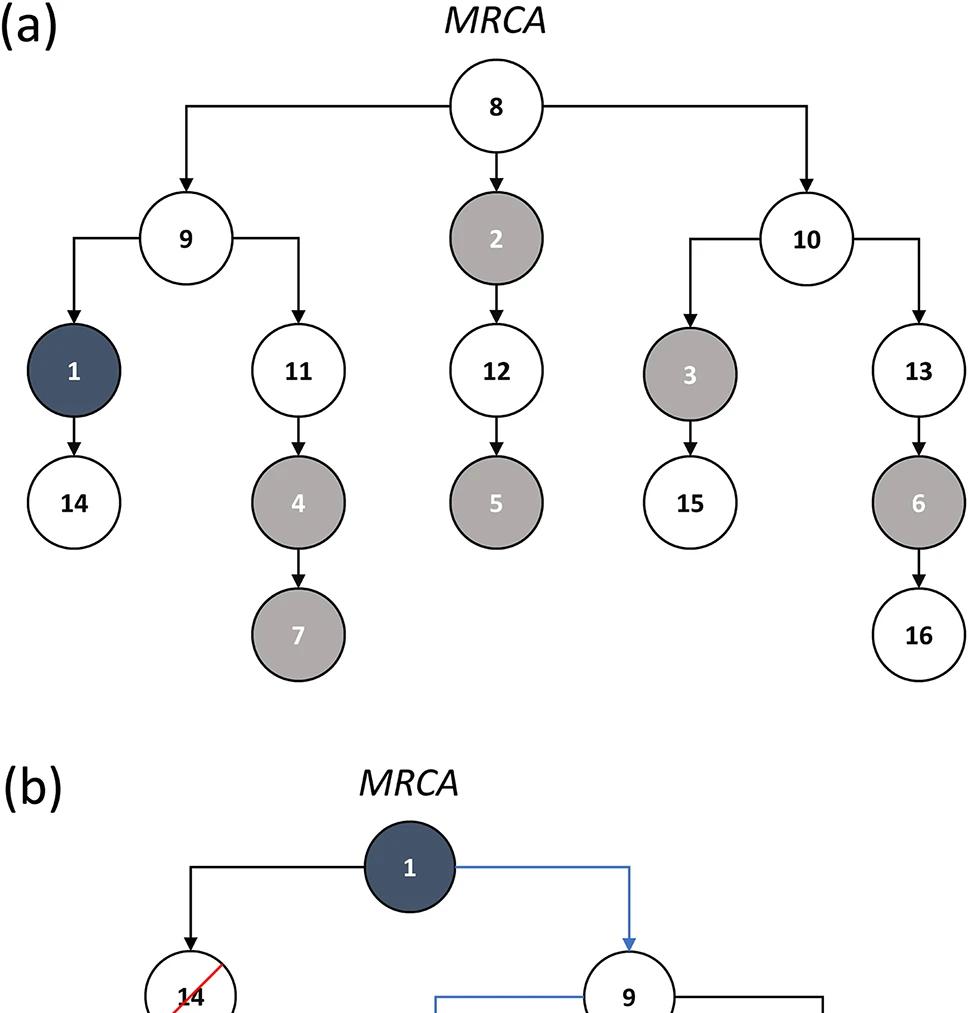
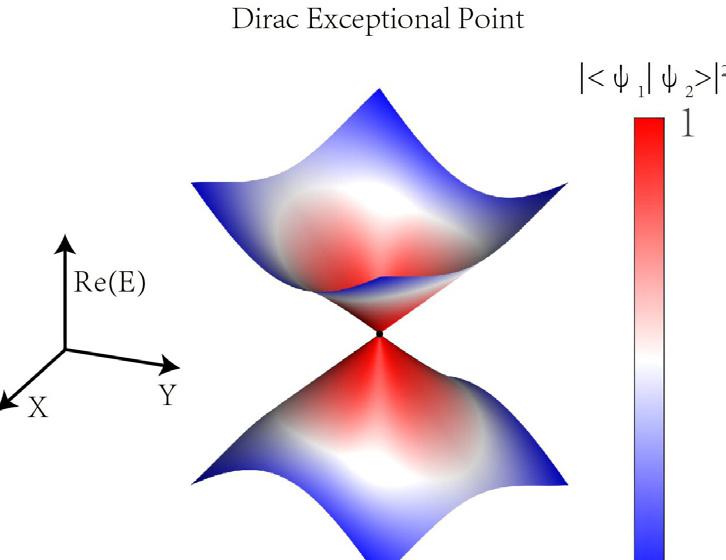
Researchers in China have experimentally confirmed Dirac EPs, a new type of energy degeneracy that blends Dirac points and exceptional points, using nitrogen-vacancy defects in diamond. This novel Hamiltonian design enabled observation of real eigenvalues and eigenstate degeneracy. Dirac EPs could revolutionize non-Hermitian quantum control by avoiding typical dissipative transitions, aiding quantum sensor and computing development while opening new paths for studying geometric phases in quantum systems.
RIKEN physicists have developed a method to study isolated Majorana fermions in time-reversal-symmetry-breaking topological superconductors by analyzing their electromagnetic multipole responses. These particles, being electrically neutral, are usually difficult to detect.
Their theoretical model shows that the electromagnetic behavior of Majorana fermions reveals the hidden properties of complex Cooper pairs. This approach offers a promising route to investigate topological superconductors and guide future experimental breakthroughs.

Quantum sensors like SMSPDs are revolutionizing particle detection, offering high spatial and time resolution crucial for nextgen colliders. Tested at Fermilab, these sensors can track charged particles from dense collisions better than traditional methods.

Strange metals conduct electricity as a continuous quantum fluid, not through discrete electron-like quasiparticles, defying Fermi liquid theory. Shot noise experiments in YbRh₂Si₂ showed no signs of particle-based current, suggesting electrons lose identity in these materials.

This breakthrough reshapes our understanding of conductivity and could help unravel mysteries like high-temperature superconductivity. It signals a bold shift in how quantum materials are studied.




Current
treatments for genetic diseases don’t help everyone

Emily Kramer-Golinkoff has a rare cystic fibrosis mutation, making her ineligible for current CF therapies that help most patients. Her nonprofit, Emily’s Entourage, supports research into mutation-agnostic gene therapies offering hope for broader treatment.
Though her condition is severe, new clinical trials—like one by Spirovant Sciences—could change outcomes for those like her. With only 30% lung function, Kramer-Golinkoff stays focused on the promise these therapies bring.

3D bioprinting holds great potential in the field of regenerative medicine
Scientists at NMI, TU Darmstadt, and Black Drop Biodrucker GmbH developed a bioink with electrospun fibers that enhance nutrient transport in 3D-printed tissues, even without hollow interiors. This advancement addresses a major hurdle in tissue viability.
With added mechanical strength and reduced swelling, the bioink shows promise for pharmaceutical testing and regenerative medicine. It could eliminate animal testing and support personalized therapies with improved tissue stability for surgical use.
Breakthrough in Monkeypox Treatment: Targeting the Virus’s Weak Spot
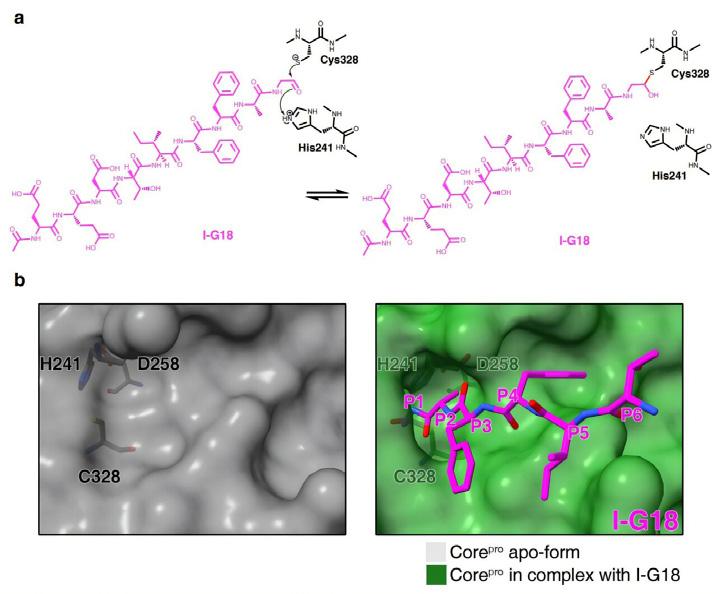
Scientists identified the CorePro protein as monkeypox’s weak spot and mapped its structure using cryo-EM and X-ray crystallography. They then developed six new drugs that outperform aloxistatin by up to 20 times in halting viral replication.
These promising treatments may combat monkeypox and related viruses like smallpox. Researchers are now refining these drugs to ensure safety and effectiveness for real-world use.





New study links Plasmodium falciparum infection to Burkitt lymphoma development
A study published in The Journal of Immunology found that Plasmodium falciparum malaria elevates AID levels in B cells, contributing to Burkitt lymphoma (BL). The study shows that this enzyme is crucial for MYC gene translocation, linking malaria directly to BL development.
The research suggests that reducing malaria could decrease BL cases in areas with high malaria prevalence. Elevated AID levels in children with uncomplicated malaria further confirm the role of P. falciparum in increasing childhood cancer risk.


More than a device, it's an enabler.
Naqi is the only digital interface with the power to transform the way people interact with technology, from gaming and mobility, to defence and first response. From the moment you put it on, in the blink of an eye, your world will change. Because if you can imagine it, Naqi lets you do it.

Learn more


Nginga-1 is a CubeSat designed to demonstrate cutting-edge small satellite technology. Compact and efficient, it embodies the innovation of CubeSats, providing a low-cost platform for advanced missions. Nginga-1 is equipped to perform [specific mission, e.g., Earth observation, communication, or scientific research], leveraging miniaturized components to deliver impactful results in space.
By joining the CubeSat revolution, Nginga-1 showcases the potential of small satellites to contribute to space exploration and research, democratizing access to space for more players.”


Marathon Packing Checklist
Pack your race bib, safety pins, running watch, and layers suited to the weather. Bring anti-chafe cream, tissues, and any personal items you might need. Fuel with the products you’ve trained with, and use a running belt or vest for easy access.
Include a post-race kit with warm clothes, snacks, and a plastic bag for sweaty gear. Keep your phone charged, consider a power bank, and check the event rules if using earphones. Focus on what works best for you and avoid last-minute changes. A calm, prepared start sets the tone for a strong finish.
UREVO Strol 2E and Mobvoi: The Best Walking Treadmills of 2025
Walking treadmills like the UREVO Strol 2E and Mobvoi Home Treadmill offer space-saving designs and low noise, helping you stay active indoors with ease. These models are compact, affordable, and ideal for daily steps—even during work.
With research showing health benefits starting at just 2,300 steps, these treadmills provide accessible ways to move more without leaving home. Whether you’re short on time or space, there’s a great option to suit your fitness level and lifestyle.


One-Minute Abs Circuit Still Holds Up Decades Later
This core workout—crunches, planks, and reverse plank—has delivered results for over 20 years. It blends movement and static strength for a 360-degree core challenge.
Complete the sequence in order, using correct form and muscle control to build lasting core stability, posture, and strength.





Workout
The Cha Cha Slide plank challenge, created by Kaleishia Hoskins and Nicholas Dickens, is designed to make exercise fun and effective.
It combines a high plank with leg moves to enhance core and upper body strength, while the catchy routine helps distract from the physical challenge.
It’s a great group activity, providing social bonding and stress relief, and is enjoyable for people of all fitness levels. Whether doing it with kids or in a fitness class, it’s a quick, enjoyable way to boost both mood and fitness.


Tundavala
Country: Angola

SARS-CoV-2 affects male reproductive health by targeting cells expressing ACE2 and TMPRSS2. A study revealed that infected individuals showed significantly reduced sperm count, motility, and increased DNA fragmentation compared to uninfected controls.
Most notably, sperm quality declined after infection, with 75% of patients showing a 21% rise in DNA fragmentation. The results indicate that COVID-19 may have lasting effects on male fertility, and clinicians should factor in prior infection during fertility evaluations.






HPV-related throat cancers are increasing, but risks can be reduced by avoiding tobacco, limiting alcohol, getting the HPV vaccine, and eating a healthy, whole-food diet. Oropharyngeal cancer, a type of head and neck cancer, is growing rapidly and can be HPV-related or not, affecting treatment strategies.
Dr. Katharine Price of Mayo Clinic emphasizes that HPV-related cancers are more treatable. She advises the “big three” for prevention: no smoking, minimal alcohol, and HPV vaccination, along with a balanced diet low in processed foods and refined sugars.
SARS-CoV-2 affects male reproductive health by targeting cells expressing ACE2 and TMPRSS2. A study revealed that infected individuals showed significantly reduced sperm count, motility, and increased DNA fragmentation compared to uninfected controls.
Most notably, sperm quality declined after infection, with 75% of patients showing a 21% rise in DNA fragmentation. The results indicate that COVID-19 may have lasting effects on male fertility, and clinicians should factor in prior infection during fertility evaluations.
Researchers from Karolinska Institutet, Imperial College London, and Xiyuan Hospital have identified new prostate cancer biomarkers detectable via urine tests. Using AI and tumor gene analysis, they developed a non-invasive method outperforming the current PSA blood test.
The findings, published in Cancer Research, could enable earlier diagnosis and reduce unnecessary biopsies. Large-scale trials are planned, including collaboration with the UK’s TRANSFORM study, to validate these promising results.


Leisure time in later years can enhance longevity and brain health. A 2023 study highlighted eight habits—like exercise, diet, and stress management—that may add 24 years to life. Walking, learning new skills (e.g., languages or quilting), and staying socially engaged boost cognition and neuroplasticity.
Challenging activities, from teaching to dancing, preserve mental agility. Combining physical, cognitive, and social pursuits offers the best protection against aging. As researcher Laura D. Baker notes, “It’s not just one challenge—it’s exercise, diet, stimulation, and engagement together.”






Strong immune resilience is vital for healthy aging, with research showing it reduces infection risks, chronic diseases, and premature death. A study led by Dr. Sunil K. Ahuja highlights the TCF7 gene’s role in maintaining T-cell function, emphasizing midlife (40–70) as a critical window for interventions like lifestyle changes and medical monitoring.
Beyond infections, robust immunity may protect against heart disease and Alzheimer’s by controlling inflammation. Future research could explore therapies to enhance immune resilience, potentially delaying age-related decline. Proactive midlife habits and early detection are key to sustaining long-term health.
A study from the University of Jyvaskyla found that unhealthy habits, like smoking, heavy drinking, and physical inactivity, lead to health declines starting at age 36. These behaviours are linked to long-term physical and mental health issues.
Intervening early can prevent the cumulative damage from these habits, reducing the risk of chronic disorders like heart disease and cancer, and improving overall well-being.
Researchers are studying nicotinamide mononucleotide (NMN) for its potential to support healthy aging by boosting cellular energy. Early trials show promise, such as improved insulin sensitivity, but long-term effects remain uncertain. Experts stress the need for larger studies to confirm safety and benefits.
While NMN may complement a healthy lifestyle, it’s not a cure-all. Consumers should consult healthcare providers before use, as product quality and optimal dosing are still under investigation. Ongoing research aims to clarify its role in aging and metabolism.


While Earth’s oxygen supply is vast, several catastrophic events, some potentially triggered by human actions, could theoretically deplete it. Human-related causes include:
• Global Deforestation: Extensive and rapid clearing of forests, a major oxygen producer through photosynthesis, could significantly reduce the rate at which oxygen is replenished.
• Oceanic Dead Zones: Pollution and agricultural runoff can create large, oxygen-depleted areas in the oceans. Phytoplankton, which contribute a significant portion of Earth’s oxygen, cannot survive in these zones, leading to reduced oxygen production.
• Runaway Greenhouse Effect: While primarily known for increasing temperatures, an

extreme, human-induced greenhouse effect could potentially alter atmospheric chemistry in ways that consume oxygen. This is a less direct and less likely scenario but a theoretical possibility if feedback loops become uncontrollable.
• Nuclear War: While the immediate devastation is the primary concern, widespread nuclear fallout could severely impact photosynthetic organisms on land and in the sea, hindering oxygen production for an extended period. Atmospheric changes resulting from massive fires could also consume oxygen.
Experience unparalleled image quality and full immersion in every football match with a lightweight, next-generation VR headset engineered for physical activity.
Touch or grip the digital ball and feel the reality with innovative gloves that deliver precise vibration feedback.
Bring the essence of real football to life with revolutionary cleats, delivering precise feedback on every movement, kicking force, and interaction with the virtual ball.
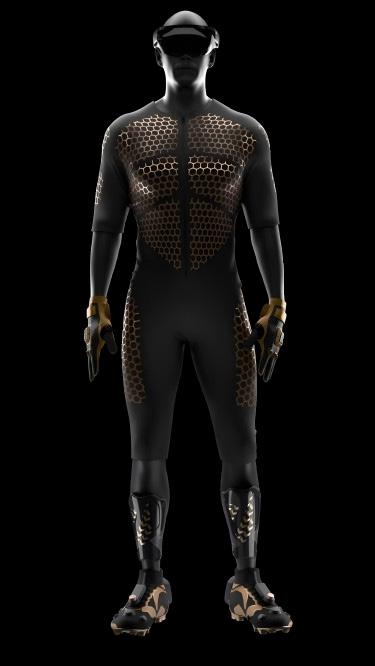
Learn more
Tracking player positions, collecting biometric data, and replicating the tactile sensations of football become real with a Smart Suit featuring smart haptic technology.
Elevate immersion with enhanced shin guards integrated with haptic technology, allowing players to feel ball impacts even in areas not covered by the bodysuit

& Aniversary

April 27
Historical Events:
4977 BC – Traditional Date for the Creation of the Universe by Johannes Kepler: Although obviously incorrect by modern standards, the German astronomer and mathematician Johannes Kepler calculated in the 17th century that the universe was created on April 27, 4977 BC. This fascinating historical note illustrates how early scientists attempted to reconcile observational astronomy with religious and philosophical worldviews. Kepler’s efforts contributed to the emerging scientific method by emphasizing mathematical precision and empirical data, even when working within flawed frameworks. His laws of planetary motion would later serve as the foundation for Newton’s law of universal gravitation, bridging the Renaissance and Enlightenment periods.
1904 – Founding of the Experimental Biology Society in London: The Society for Experimental Biology was established to advance the discipline of biology through experimentation and interdisciplinary research. It played a crucial role in shaping modern fields like molecular biology, developmental biology, and physiological ecology. Meetings organized by the society led to exchanges of revolutionary ideas, helping standardize experimental practices that remain critical to scientific research today.
Scientist Anniversaries:
1820 – Birth of Herbert Spencer: An English philosopher, biologist, anthropologist, and sociologist who coined the term “survival of the fittest” after reading Darwin’s work. Though often associated with social Darwinism, Spencer made legitimate contributions to scientific methodology, emphasizing empirical observation and the gradual evolution of complex systems. His work influenced early psychology and theories of societal development.
1791 – Birth of Samuel Morse: An
American inventor and painter best known for developing the Morse code and advancing telegraphy. While his primary fame rests with communication technology, Morse’s innovations accelerated the speed at which scientific knowledge could be exchanged worldwide, laying infrastructure that would fuel future collaborations across continents in fields like medicine, astronomy, and engineering.
Scientific Discoveries:
2005 – Discovery of Eris, a Dwarf Planet: Astronomer Mike Brown and his team announced the discovery of Eris, a dwarf planet located beyond Pluto in the scattered disc. This major find led directly to the reclassification of Pluto as a dwarf planet by the International Astronomical Union in 2006. Eris is slightly smaller than Pluto but more massive, showing that the Kuiper Belt and beyond harbored many large objects. This discovery revolutionized our understanding of the solar system’s structure, highlighting that planetary formation processes extended much farther out than previously imagined.
April 28
Historical Events:
1789 – The Mutiny on the Bounty: While seemingly more a naval drama than a scientific milestone, the mutiny aboard HMS Bounty profoundly impacted navigation, cartography, and botanical science. The original mission was to transport breadfruit plants from Tahiti to the Caribbean as a cheap food source for enslaved laborers. The mutiny disrupted this scientific agricultural project but also led to decades of rich ethnographic and biological studies of Pacific island societies and ecosystems as explorers retraced the Bounty’s path, recording previously undocumented plant and animal species.
1952 – End of the American Occupation of Japan: The signing of the Treaty of San Francisco ended the occupation and marked
Japan’s rapid reentry into the global scientific and technological community. Post-war Japan embraced research and development aggressively, investing heavily in physics, engineering, and materials science, eventually leading to world leadership in fields such as robotics, electronics, and automotive technologies. The groundwork laid during this period paved the way for innovations like the Shinkansen bullet train and pioneering work in computer science.
Scientist Anniversaries:
1906 – Birth of Kurt Gödel: An Austrian-American logician, mathematician, and philosopher who is widely considered one of the most significant logicians in history. His incompleteness theorems demonstrated inherent limitations in every formal axiomatic system capable of modeling basic arithmetic, profoundly altering the landscape of mathematics, logic, and philosophy. Gödel’s work continues to impact fields like computer science, cognitive science, and even discussions on artificial intelligence and consciousness.
1758 – Birth of James Monroe (scientific connection): Although better known as the 5th President of the United States, Monroe’s leadership indirectly impacted American scientific development by supporting national infrastructure projects, including early funding for geological surveys and explorations that expanded scientific knowledge of the American continent’s geography and natural resources.
Scientific Discoveries:
2017 – Advances in CRISPR Gene Editing Published: Researchers published new findings showing how CRISPR-Cas9 gene editing could be used to correct mutations in human embryos without introducing unintended changes. This leap in genetic engineering opened new frontiers in the treatment of inherited diseases, cancer therapies, and raised

Archaeologists in Peru uncovered a 5,000-year-old noblewoman’s remains in Caral, revealing women’s influential role in the Americas’ oldest civilization. The mummy, found in Aspero, was preserved with skin, hair, and a macaw feather mantle, alongside artifacts like a toucan’s beak and stone bowl.
Dating to 3000 BC, the woman wore a status-signifying headdress, challenging assumptions about male-dominated leadership. Caral, a UNESCO World Heritage Site, flourished alongside ancient Mesopotamia and Egypt, underscoring its historical significance.
A 16,000-year-old Palaeolithic dog skeleton, found in 2021 in the Baume Traucade cave, southern France, reveals early human-canid bonds. Studied by Dr. Mietje Germonpré, the adult female’s remains, showing traits closer to dogs than wolves, suggest shared living with humans.
Trauma marks indicate human-inflicted injuries, yet care during life points to domestication attempts. Preserved in the cave, this find, alongside sites like Bonn-Oberkassel, fuels debates on dog evolution, highlighting a complex mix of cooperation and conflict in the Pleistocene era.

Archaeologists uncovered Lyncus, a Bronze Age city in North Macedonia, likely the Kingdom of Lyncestis’ capital, conquered by Philip II in 358 BC. Artifacts, including a 325-323 BC coin, link to Alexander the Great.
The 2023 surveys by the Institute and Museum-Bitola and California State Polytechnic University-Humboldt revealed an acropolis and trade route significance, shedding light on Macedonian civilization.

A York discovery at Driffield Terrace reveals the first physical evidence of a Roman gladiator fighting a lion, with bite marks on a skeleton’s hip bone. Confirmed by Malin Holst of York Osteoarchaeology, the unhealed wound suggests a fatal encounter for a Bestarius, supported by ritual decapitation and burial practices.
This figladiator cemetery, reshapes our understanding of Roman entertainment in provincial cities. Tooth enamel studies and genomic research highlight the diverse origins and combat-intensive lives of these fighters, with the skeleton now displayed at DIG: An Archaeological Adventure.
Image Credits: SciTechDaily.com





New research from the Atacama Cosmology Telescope and Dark Energy Spectroscopic Instrument suggests cosmic structures are less “clumpy” than predicted, hinting at dark energy’s influence. Scientists, including Joshua Kim and Mathew Madhavacheril, cross-correlated Cosmic Microwave Background light with galaxy distributions, revealing a lower Sigma 8 value.
Published in the Journal of Cosmology and Astroparticle Physics, the findings combine ACT’s ancient light data with DESI’s luminous red galaxies, creating a cosmic timeline. This discrepancy, observed around four billion years ago, may indicate new physics, with future Simons Observatory data expected to clarify these insights.
Firefly Aerospace’s Blue Ghost Mission 1, the first successful commercial lunar lander, touched down in Mare Crisium on March 2, delivering ten CLPS initiative instruments. Its autonomous landing, precise engine technology, and balanced design ensured success, operating over 14 days and surviving lunar night, as CEO Jason Kim shared at the 40th Space Symposium.
Blue Ghost’s LISTER drill and Lunar PlanetVac uncovered hard lunar subsurface and collected regolith, respectively. Unexpectedly high temperatures, worsened by crater-reflected heat, underscored the need for better thermal modeling. Shading the radio with the antenna maintained operations, paving the way for future lunar missions.








A study by Paolo Padoan at ICCUB, published in Nature Astronomy, shows that Bondi-Hoyle accretion allows young stars to capture material from gas clouds, making protoplanetary disks larger and more durable than previously thought.
Using ALMA observations and simulations, the team validated that this accretion process provides mass and angular momentum, resolving discrepancies in disk formation models and offering insights into conditions for habitable planets.
A Los Alamos National Laboratory-led team investigates nucleosynthesis of heavy elements like uranium and plutonium in gamma-ray burst jets from collapsed stars, as published in The Astrophysical Journal. High-energy photons transmute protons into neutrons, enabling the rapid neutron-capture process (r process) to forge heavy elements in the jet’s cocoon.
This framework, involving multiphysics like hydrodynamics and general relativity, may explain kilonova and extraterrestrial plutonium in deep-sea sediment. Matthew Mumpower proposes dynamically produced neutrons drive the r process, offering new insights into heavy element origins.
Image Credits: Los Alamos National Laboratory
Princeton University engineers created a metamaterial, termed a “metabot,” that transforms and moves under magnetic fields, as detailed in Nature on April 23. Inspired by origami, this chiral, modular structure, made from plastics and magnetic composites, performs complex motions like twisting, expanding, or contracting, with applications in robotics, thermoregulation, and medical devices.
Experts, including Xuanhe Zhao from MIT and Davide Bigoni from Universita’ di Trento, laud its versatility, predicting impacts in soft robotics and aerospace. The metabot’s Kresling tube design enables precise, remote-controlled deformations, simulating complex behaviors like hysteresis.





Image Credits:
VPNs are increasingly popular for securing data, accessing geo-restricted content, and browsing anonymously. However, not all VPNs are equal. Top providers like NordVPN, Surfshark, and ProtonVPN offer strong AES-256 or ChaCha20 encryption, speeds over 950 Mbps, and verified nologs policies to ensure privacy and performance.
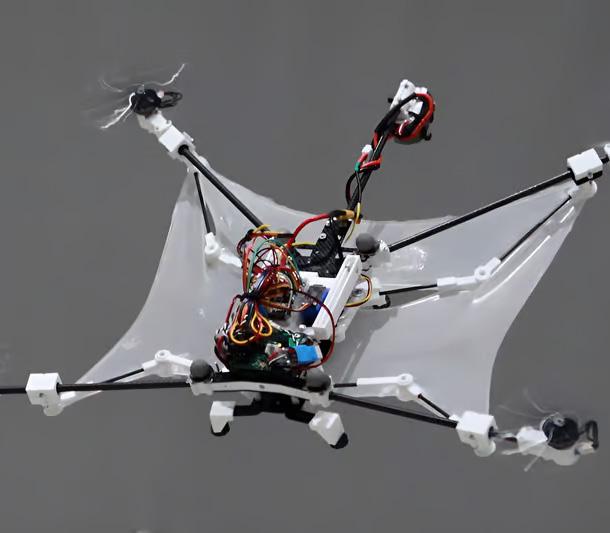
Flying robots are being developed to complement traditional ground-based systems in construction, focusing on tasks like repairs and disaster relief. Their ability to access hard-to-reach places offers unique advantages.
These drones are lightweight and mobile but still face challenges like limited flight time and payload. The research proposes a hybrid approach, using drones for high-elevation construction while ground systems handle lower levels.

Researchers at POSTECH developed a drone with flying-squirrel-inspired wings that extend to help decelerate quickly, improving maneuverability. This AI-based system has shown a 90.5% success rate in navigating obstacles. The drone’s wings fold when cruising, but extend to maximize aerodynamic drag when sudden stopping is needed, making it more agile compared to traditional drones.



The station was designed between 1984 and 1993. Elements of the station were in construction throughout the US, Canada, Japan, and Europe beginning in the late 1980s.
The International Space Station Program brings together international flight crews, multiple launch vehicles, globally distributed launch and flight operations, training, engineering, and development facilities, communications networks, and the international scientific research community.


A spot in space where the gravitational forces of two large bodies balance a smaller object’s motion. These points allow spacecraft to remain stable with minimal fuel use.
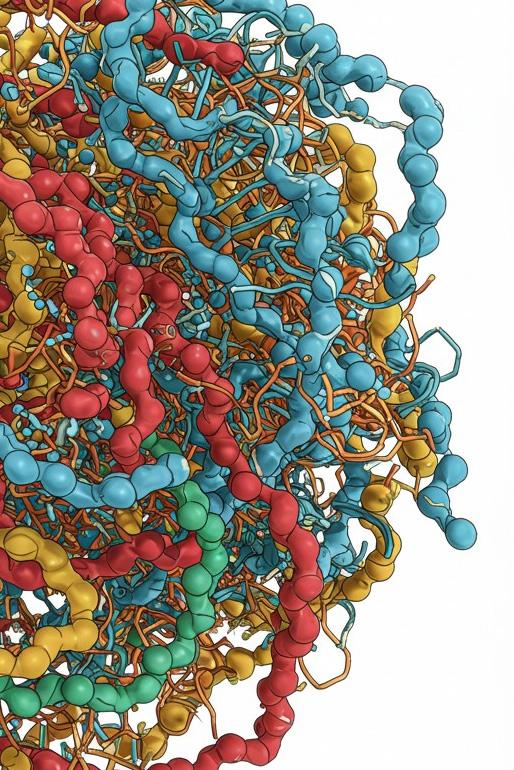
ground: Non-coding DNA offers a safe zone for mutations, allowing evolution to tinker without jeopardizing essential genes. Think of it as nature’s sandbox for genetic experiments.
• RNA Production: Some junk DNA produces non-coding RNAs that regulate gene expression, protein synthesis, and even chromatin structure. These RNAs act like molecular whisperers, orchestrating complex cellular processes behind the scenes.
In short, junk DNA has a resume longer than a college overachiever’s,
filled with secret projects we are only now beginning to understand.
In a twist worthy of a plot in a mystery novel, scientists discovered that many important regulatory elements lie hidden within junk DNA. For instance, mutations in these non-coding regions have been linked to diseases like cancer, diabetes, and autism.
Some recent mind-benders:
• The ENCODE Project:
A massive international effort showed that at least 80% of the human genome has biochemical functions, suggest-
ing the term “junk” might be a gross underestimation.
• Ultraconserved Elements: Certain non-coding sequences are nearly identical across vastly different species like mice, humans, and chickens, suggesting that they perform vital roles so crucial that they cannot tolerate change.
• Cryptic Genes: Some pseudogenes, long thought to be evolutionary relics, can occasionally produce functional proteins, almost like a forgotten kitchen appliance suddenly becoming indispensable.
These discoveries hint that we have barely scratched the surface of our genomic iceberg.
A Playground for Evolution
Evolution doesn’t always work like a master architect—sometimes it’s more of a chaotic tinkerer throwing ideas against the wall to see what sticks. Junk DNA serves as an experimental canvas where new functions can arise without jeopardizing essential processes.
Consider endogenous retroviruses (ERVs): remnants of ancient viral infections that now help regulate gene expression in mammals. It’s like being mugged by history and finding out your mugger is now your personal assistant.
Another astonishing example: the placenta. Critical for mammalian reproduction, it’s largely shaped by genes co-opted from ancient viral invaders embedded within junk DNA. Sometimes, biology writes its best innovations from the least expected ingredients.
Studies show that junk DNA plays a huge role in the complex regulation needed during development. Different tissues and organs require different gene expression patterns, and much of that fine-tuning is controlled by enhancers buried within the non-coding genome.
Embryonic development, for instance, is a symphony of gene expression changes, precisely timed and executed. The maestros conducting this symphony are often regulatory sequences hidden deep within junk DNA. Without this nuanced control, we would end up as biological chaos rather than functional beings.
Furthermore, slight changes in these regulatory regions are thought to underlie the remarkable differences between species—such as why chimpanzees and humans, despite being 98% genetically identical, are so drastically different.
Mutations in junk DNA are implicated in various diseases. Genome-wide
association studies (GWAS) have revealed that most disease-associated variants are found in non-coding regions.
Cancer, in particular, often involves mutations in enhancer or silencer elements that deregulate cell growth. It’s like the city’s traffic lights breaking down, leading to a massive genomic traffic jam with disastrous consequences.
Diabetes, autoimmune diseases, schizophrenia, and even obesity have links to mutations not in genes themselves, but in their surrounding regulatory sequences— underscoring the critical importance of so-called junk.
One of the most exciting frontiers is the role of junk DNA in brain development and cognition. Some researchers believe that regulatory sequences in junk DNA might underlie the human brain’s exceptional complexity compared to other species.
Enhancers active in developing brain tissue may have evolved rapidly in humans, potentially fueling our cognitive abilities, creativity, and maybe even our knack for asking way too many questions—a hallmark of curiosity.
It’s also being explored whether changes in non-coding RNA levels contribute to neurodegenerative diseases like Alzheimer’s, pointing to
a deep, previously hidden connection between junk DNA and brain health.
Jumping genes, or transposons, make up a significant chunk of our genome—by some estimates, over 45%. These mobile genetic elements can copy and paste themselves throughout the DNA, creating mutations, altering gene expression, and driving structural changes.
While often disruptive, they have also contributed to genetic innovation. For example, important parts of the immune system’s machinery derive from ancient transposons. In fact, some scientists think that without transposons, complex multicellular life might never have arisen. Think of transposons as the street artists of the genome: sometimes messy, sometimes brilliant, always unpredictable.
Understanding junk DNA is crucial for next-generation medicine. Personalized treatments might target regulatory elements to fine-tune gene expression, offering new ways to combat genetic diseases at their root causes rather than just managing symptoms.
Gene editing technologies like CRISPR are already being tailored
to target non-coding regions to treat diseases, opening up vast new therapeutic landscapes.
Additionally, synthetic biology is beginning to leverage non-coding DNA to build complex gene circuits for novel therapies and bioengineering applications, potentially leading to new kinds of programmable cells that can seek out and destroy cancer cells or deliver therapeutic payloads exactly where needed.
Initially, the term “junk DNA” was coined by geneticist Susumu Ohno in 1972, based on the assumption that much of the genome was functionless baggage. This perspective reigned supreme for decades until technological advances like high-throughput sequencing, comparative genomics, and chromatin mapping began unraveling the true complexity hidden within the so-called junk.
In retrospect, it’s a cautionary tale: never underestimate nature’s ability to repurpose, recycle, and reinvent.
There’s growing evidence that junk DNA, especially transposable elements, becomes more active with age. As our cellular repair systems weaken, jumping genes can cause genomic instability, contributing to aging and age-related diseases like cancer, dementia, and frailty.
One provocative idea is that controlling the activity of these elements could slow down the aging process—a theory currently under intense investigation. It’s like trying to keep a raucous party from turning into a disaster by reinforcing the door hinges before the guests start swinging from the chandeliers.
Scientists are also studying the relationship between junk DNA and telomere shortening, another key factor in cellular aging, adding yet another layer to the already complex picture.
Even pop culture has picked up on junk DNA. In Michael Crichton’s “Jurassic Park,” scientists reconstruct dinosaurs using frog DNA to fill in missing genetic gaps. While pure science fiction, it highlights the growing realization that non-coding DNA could hold vital clues to recreating or understanding extinct species.
The concept of junk DNA has even entered philosophical discussions, symbolizing the hidden potential within apparent randomness—a metaphor for undiscovered talent, latent creativity, and the mysteries that lie just beneath the surface.
Pink flags are subtle signs in a relationship that may indicate discomfort or potential issues. They include avoiding conflict, differences in affection styles, and distractions from technology.
Addressing pink flags, such as emotional safety concerns and unresolved past issues, can prevent them from escalating into more serious red flags, ensuring growth and better communication within the relationship.
A University of Zurich study reveals that extraversion and agreeableness are key personality traits linked to volunteering and charitable giving. Extraverts are more likely to volunteer, while agreeable individuals are more inclined to donate.
Understanding these connections can help organizations develop strategies to promote charitable behavior, tapping into people’s strengths and motivations to encourage greater community involvement.





Parents’ general parenting styles significantly influence their children’s diets, with strict and permissive parents often failing to model healthy eating. Efforts to combat childhood obesity must address these family dynamics.
The study suggests that obesity treatment programs should incorporate more comprehensive approaches that consider family dynamics and parenting styles for better success.

Denmark’s focus on self-esteem and self-confidence contributes to its long-standing happiness ranking. The PARENT model promotes treating children as equals and encourages participation in family tasks from a young age.
This model nurtures independence and a balance between self-confidence (external achievements) and self-esteem (internal worth), fostering naturally helpful behavior in Danish teens.



Retirement brings uncertainty, especially in volatile markets.
A disciplined retirement plan, with a written investment policy statement (IPS), helps mitigate the risks of market downturns and emotional decision-making. Sequence of return risk can jeopardize retirement income, so it’s crucial to have a strategy for handling market fluctuations.
An IPS outlines investment strategies and guidelines for bear markets, such as using low-risk accounts or annuities. Putting this plan in writing ensures commitment and reduces the likelihood of panic-driven decisions. For couples, it’s important to create the IPS together, ensuring both partners are aligned and ready to stick to the plan.




Staying hydrated is vital for seniors. Water supports digestion, joint health, brain function, heart health, and skin vitality. Proper hydration aids digestion, alleviates constipation, and enhances nutrient absorption. It also helps preserve joint flexibility and slow degenerative conditions like osteoarthritis.
Drinking enough water boosts cognitive function, mood, and sleep patterns. It regulates blood pressure, supports heart health, and contributes to healthy, youthful skin. Retirees should aim for 125 ounces of water daily for men and 91 ounces for women, making hydration enjoyable with natural flavorings and teas.


Retiring Early with a $3.3 Million Nest Egg
A $3.3 million nest egg may not suffice for early retirement in an expensive city, especially with high living costs, healthcare, and childcare expenses. The Reddit user’s current financial plan involves a high equity exposure, risking a setback if markets crash.
To reduce risk, moving to a cheaper city and reassessing the portfolio’s equity allocation could help. Consulting a financial advisor and adjusting lifestyle expectations are essential steps to ensure a more secure retirement plan.

Retiring to France offers a peaceful lifestyle with access to stunning villages, art, and excellent healthcare. For U.S. retirees, securing legal residency is the first step, with options like the Long Stay Visa that requires proof of income. The healthcare system is robust, but retirees may need private insurance initially.
France’s favorable tax treaties benefit U.S. retirees, making it financially attractive. While costs vary by region, smaller towns offer affordable living.


In a post-apocalyptic wasteland, a woman rebels against a tyrannical ruler in search for her homeland with the aid of a group of female prisoners, a psychotic worshipper and a drifter named Max.

International Conference on Aeronautical Engineering and Innovative Spacecraft Technologies (ICAEIST)2nd June 2025 - Canada
International Conference on Human Resource Management and Performance (ICHRMP) - 13th May 2025Ethiopia
International Conference on Marine Resources Conservation and Human Impacts (ICMRCHI) - 13th May 2025South Africa
International Conference on Researches in Science and Technology (ICRST) - 1st June 2025 - India

Intern (m/f/d) on access to climate finance with “Partnering for Readiness - Trainees - Germany
Associate Investment Officer, FIG Asia Upstream & AdvisoryBangladesh
Treasury Assistant - Ghana
IC-Climate finance coordinator (2 positions) - India

New study discovers unexpected role of 4f-orbital covalency in driving chemical reactivity
Enormous hole the size of Switzerland appeared in the Antarctica sea ice, now we know why
Why aren’t there antivirus apps for the iPhone? | Tom’s Guide
Emotion-assessing wearable is like a mood ring for the face
The legendary introduction to physics from the subject’s greatest teacher
“The whole thing was basically an experiment,” Richard Feynman said late in his career, looking back on the origins of his lectures. The experiment turned out to be hugely successful, spawning a book that has remained a definitive introduction to physics for decades. Ranging from the most basic principles of Newtonian physics through such formidable theories as general relativity and quantum mechanics, Feynman’s lectures stand as a monument of clear exposition and deep insight. Now, we are reintroducing the printed books to the trade, fully corrected, for the first time ever, and in collaboration with Caltech. Timeless and collectible, the lectures are essential reading, not just for students of physics but for anyone seeking an introduction to the field from the inimitable Feynman.
Buy now
Recommendation Videos
OTD in Space – April 29: European ‘Spacelab’ Launches on Space Shuttle Challenger
Motorola Razr Ultra HANDS ON! The 2025 Foldable to Beat | Tom’s Guide
OTD in Space – April 27: NASA Launches Explorer 11